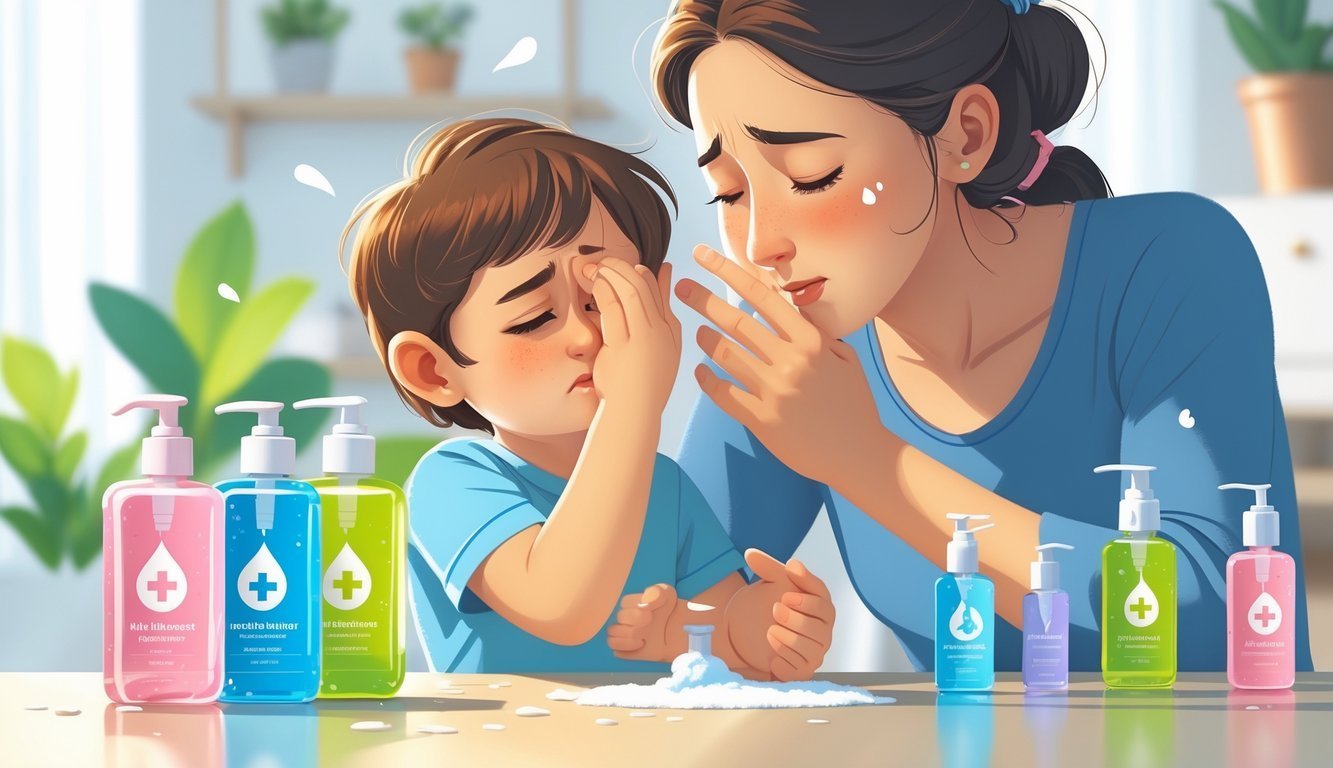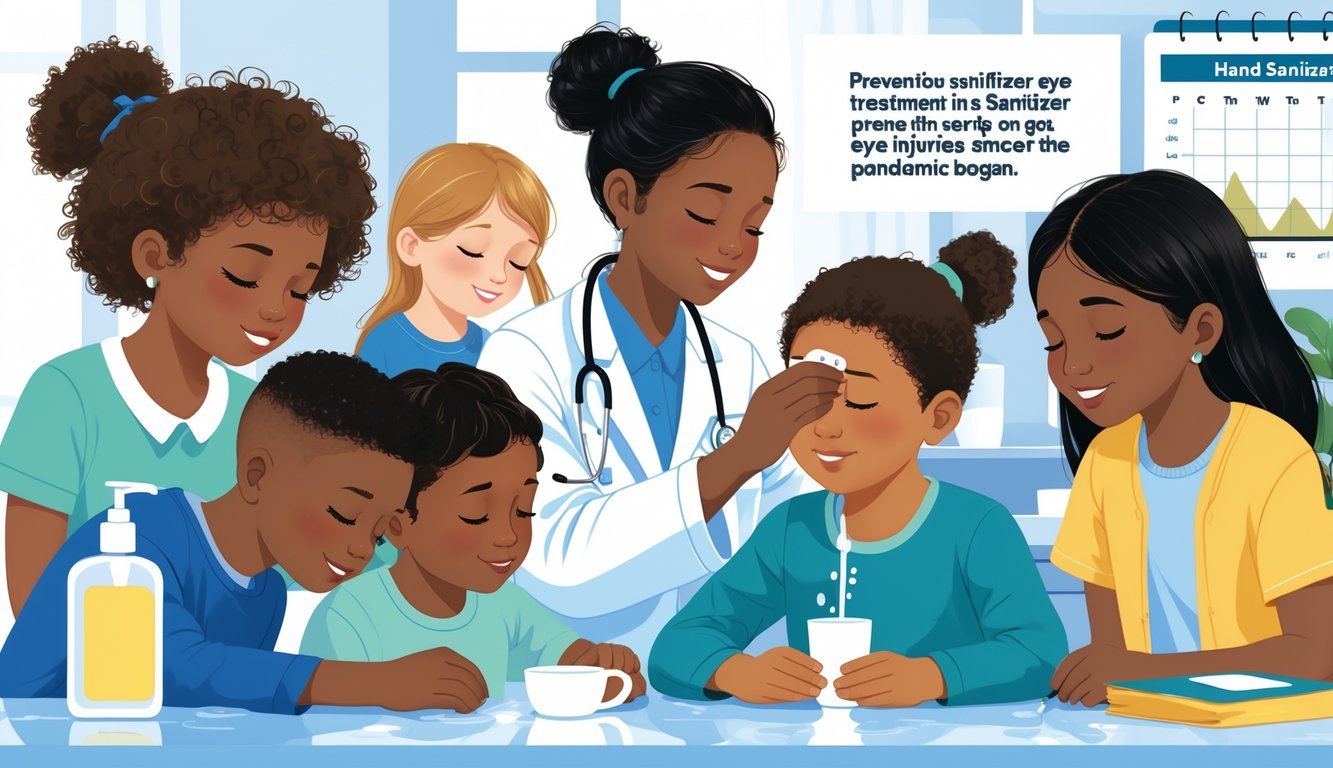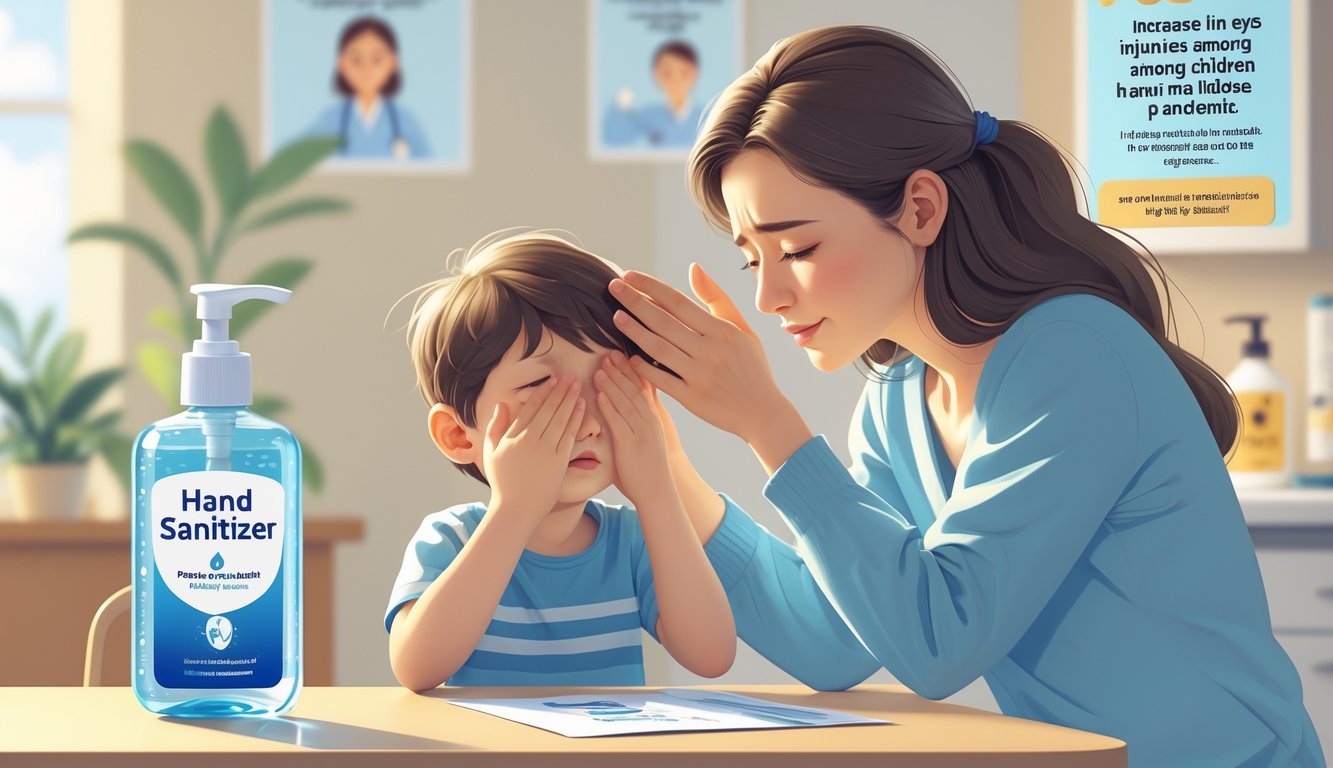PsychNewsDaily Publishers
100 Summit Drive
Burlington, MA, 01803
Telephone: (320) 349-2484
PsychNewsDaily Publishers
100 Summit Drive
Burlington, MA, 01803
Telephone: (320) 349-2484
Children's eye injuries from hand sanitizer have surged significantly during the COVID-19 pandemic, prompting the need for awareness and preventive measures among parents and educators.

Since the COVID-19 pandemic started, hand sanitizers have become a daily staple—especially for kids.
But with all this extra sanitizer around, accidents have shot up. Children’s eye injuries caused by alcohol-based hand sanitizers have spiked by roughly 700% since the pandemic began.
Lots of these injuries happen when kids accidentally get sanitizer in their eyes. That can cause pain, stinging, and sometimes even more serious damage.
If you’ve got young children at home, it’s worth knowing how these accidents happen and what you can do to prevent them. Staying alert to the risks helps you keep your kids safe without giving up on good hygiene.
You might wonder how bad these injuries can get or what you should actually do if it happens. Some simple steps can really help you avoid a stressful trip to the doctor.

Hand sanitizer is everywhere now, right? That means it’s easier for kids to get their hands on it—and sometimes, it ends up in their eyes.
Hospitals have reported a lot more eye injuries in kids since COVID-19 started.
During the pandemic, children’s eye injuries from hand sanitizer rose by about 700%.
In New York City, hospitals noticed a big jump, especially as kids started using sanitizer more at school and in public.
Sanitizer use went up to help stop the virus, but poison control centers also got way more calls about kids getting sanitizer in their eyes.
Doctors often need to treat these injuries, and sometimes, kids even end up in the hospital.
Most of the time, kids get sanitizer in their eyes by accident.
Spray and gel sanitizers can be tricky—kids might not use them carefully, and rubbing their eyes after putting on sanitizer just makes things worse.
COVID-19 made sanitizer super common, but a lot of kids didn’t really get how risky it could be near their eyes.
Leaving sanitizer bottles where kids can reach them, without watching, increases the odds of an accident.
Kids under 12 are most likely to get these eye injuries.
Younger children tend to touch their faces right after using sanitizer, which doesn’t help.
Teenagers have fewer incidents, but they’re not immune if they’re careless.
Early in the pandemic, cases jumped the most. As schools opened back up and sanitizer use became routine, eye injuries kept climbing.
Parents and teachers need to show kids how to use sanitizer safely to prevent these painful accidents.

If your child gets hand sanitizer in their eyes, acting fast really matters.
You’ll want to watch for lingering problems and know how to keep it from happening again. A little medical help and some easy safety steps can go a long way.
If sanitizer gets in your child’s eyes, rinse them with clean water right away.
Use room temperature water and keep flushing for at least 15 minutes. It’s not fun, but it helps with the burning and clears out the chemicals.
If your child still complains about pain, redness, or blurry vision after rinsing, head to a doctor or the ER.
Sometimes, severe cases need more serious treatment. Community clinics can give quick advice, too.
Tell your child not to rub their eyes—it’ll only make things worse.
You can always call emergency services or poison control for fast help.
Most kids recover from sanitizer eye injuries if you treat them properly.
Some children might have dry eyes, blurry vision, or become sensitive to light for a while.
Doctors sometimes give eye drops or ointments to help with healing and pain.
If the injury is stubborn, you might need to see an eye specialist for follow-up.
If your child keeps complaining about pain or trouble seeing, don’t wait to get help.
Honestly, if the injury makes them anxious or scared, talking to a mental health professional can help, too.
Keep hand sanitizer bottles out of kids’ reach.
In classrooms or public spaces, pick dispensers that don’t spray or splash much.
Teach kids to use just a little sanitizer and keep their hands away from their faces right after.
Show them how to rub their hands together safely.
Label sanitizer bottles clearly so kids know it’s not a toy.
Schools should train staff to react quickly if sanitizer gets in a child’s eye and make sure first-aid kits include eye wash.
Non-alcohol based disinfectants might lower the risk, but you still need to use them carefully.
Pharmacists can suggest child-safe sanitizer options if you ask.

Hand sanitizer and other cleaning products can easily cause eye irritation or even more serious injuries in kids.
Knowing what to do and who to call makes it easier to act quickly.
Flush your child’s eyes right away with clean, lukewarm water.
Keep rinsing for at least 15 minutes to wash out the sanitizer.
If your child keeps rubbing or seems in pain, get medical help fast.
Yes, 70% ethanol in hand sanitizers can sting and burn the eyes.
It can do real damage if you don’t rinse it out quickly.
Use a gentle stream of lukewarm water from a sink, shower, or even a cup.
Hold your toddler’s eye open while you rinse, so water actually gets in there.
Do this for at least 15 minutes and try to comfort your child during the process.
Call your doctor or go to urgent care if your child’s eye hurts, looks red, or if their vision seems off.
Poison control can also give advice about specific products and symptoms.
Rinse the eyes right away with lots of lukewarm water for 15 minutes.
Don’t let your child rub their eyes.
If irritation or pain sticks around after rinsing, get medical care quickly.
If you get handwashing liquid in your eye, rinse it out thoroughly right away. That’s usually the first thing anyone should do.
A doctor might prescribe eye drops or ointments if your eye gets inflamed or infected. Definitely listen to what your healthcare provider tells you—they know best.